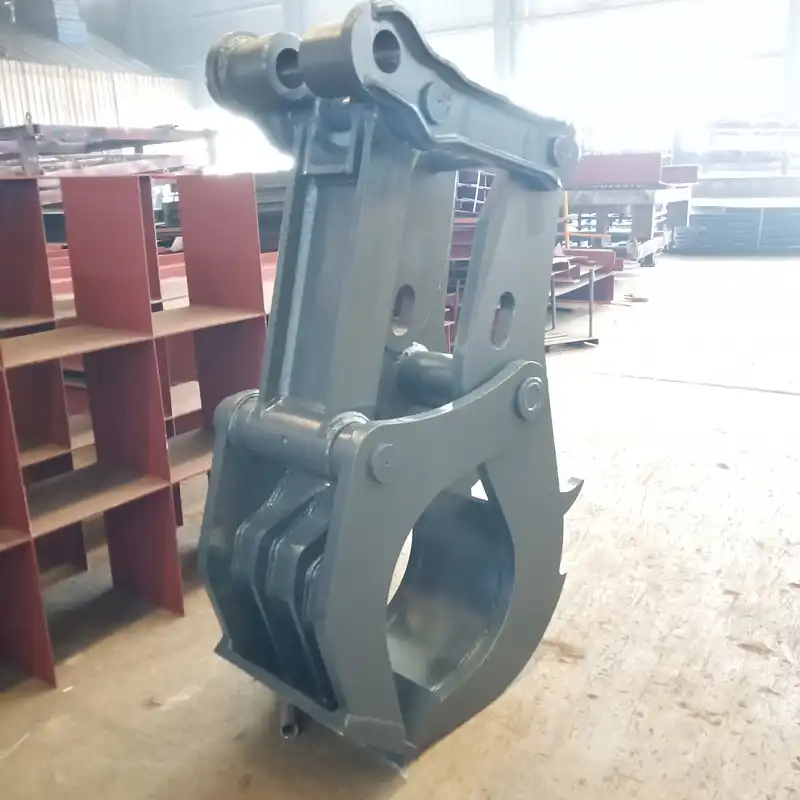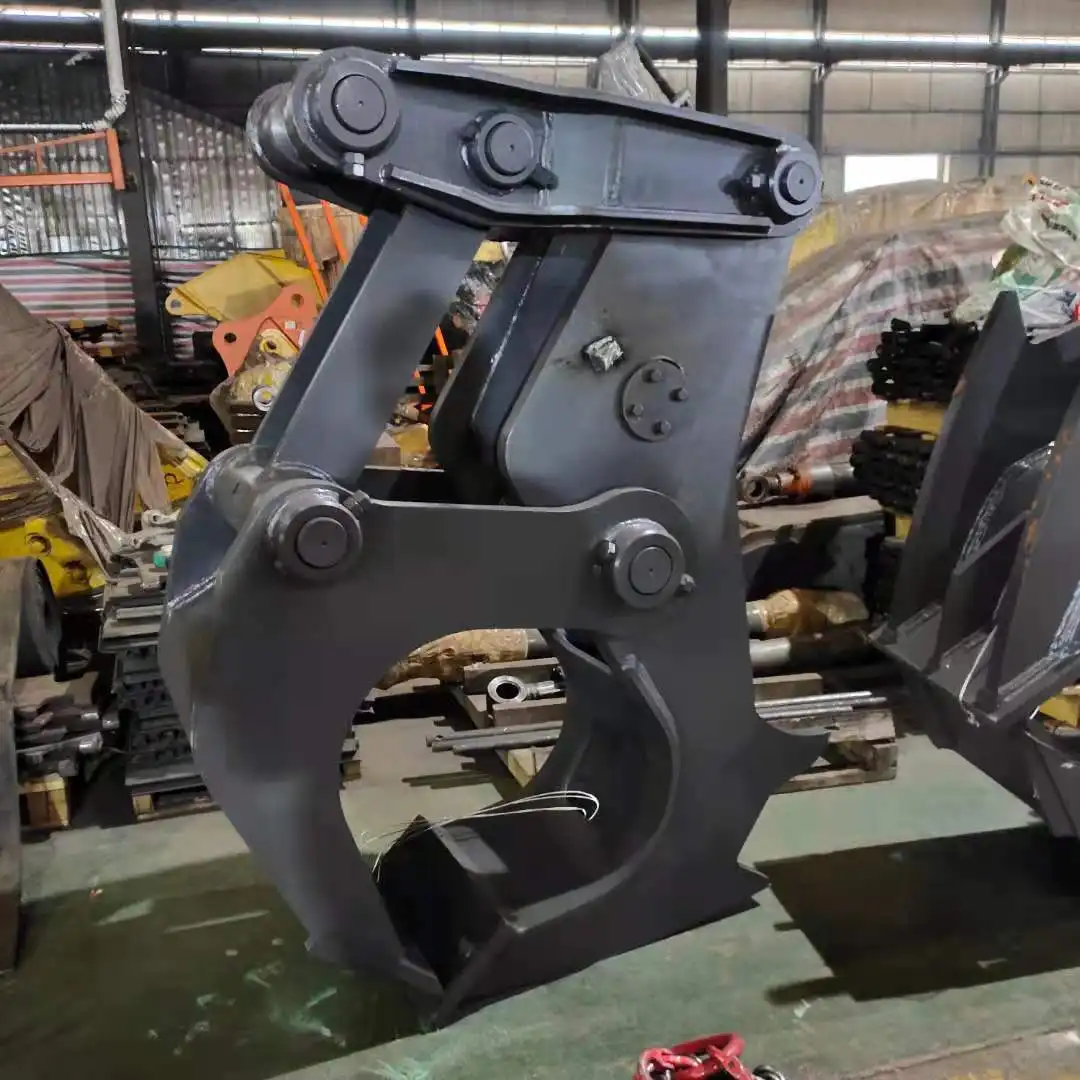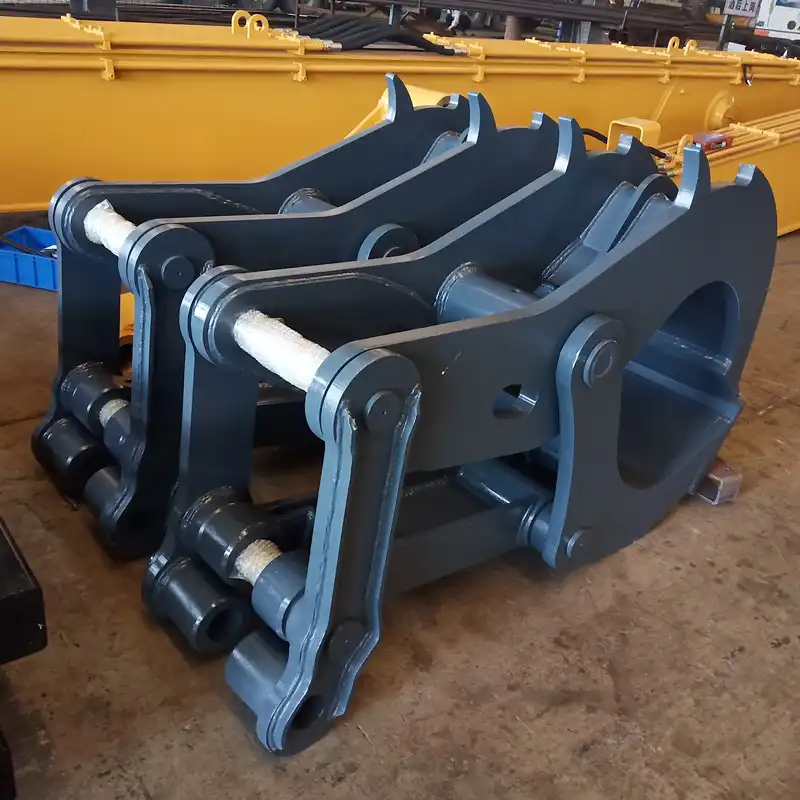What is the average lifespan of an excavator wood splitter?
The average lifespan of an excavator wood splitter typically ranges from 5 to 10 years, depending on various factors. These robust attachments, designed to efficiently split logs and process timber, are built to withstand demanding work environments. However, their longevity can be significantly influenced by usage patterns, maintenance practices, and the quality of the equipment.
Lifespan Range
Typical lifespan of excavator wood splitters
Excavator wood splitters are engineered to endure the rigors of heavy-duty wood processing tasks. On average, these attachments can last between 5 to 10 years when used under normal conditions. This timeframe assumes regular use in commercial or industrial settings, where the equipment is subjected to frequent operation and varying workloads.
It's important to note that the lifespan of an excavator wood splitter isn't solely determined by calendar years. Instead, it's often measured in operating hours. A well-maintained splitter might accumulate 10,000 to 15,000 hours of operation over its lifetime, translating to several years of productive use.
Variations in lifespan by brand and model
The durability and longevity of wood splitters can vary significantly between different brands and models. High-end manufacturers often produce splitters with superior build quality, using stronger materials and more advanced engineering. These premium models may outlast their budget counterparts by several years.
For instance, some top-tier wood splitters boast reinforced frames, hardened steel components, and advanced hydraulic systems that can extend their operational life to 12-15 years or more. Conversely, lower-quality or generic models might struggle to reach the 5-year mark, especially under intense use.
Extending the life of your excavator wood splitter
While the initial build quality plays a crucial role, the actions taken by equipment owners and operators can significantly extend the lifespan of an excavator wood splitter. Implementing a comprehensive maintenance routine is key to maximizing the attachment's longevity.
Regular inspections, timely repairs, and proper storage when not in use can add years to a splitter's operational life. Lubrication of moving parts, hydraulic system checks, and blade sharpening or replacement are all critical maintenance tasks that contribute to the equipment's durability.
Additionally, training operators to use the splitter correctly can prevent unnecessary wear and tear. Avoiding overloading, using the right splitting technique for different wood types, and understanding the machine's limits all contribute to a longer lifespan.

Key Factors Influencing Lifespan
Maintenance practices and their impact on longevity
Proper maintenance is the cornerstone of extending an excavator's wood splitter lifespan. A well-executed maintenance program can significantly increase the durability and reliability of the equipment. Regular inspections allow for early detection of potential issues, preventing minor problems from escalating into major, costly repairs.
Key maintenance practices include:
- Daily visual inspections before operation
- Regular cleaning to remove debris and prevent corrosion
- Timely replacement of worn or damaged components
- Periodic lubrication of moving parts
- Hydraulic fluid checks and changes as recommended by the manufacturer
Neglecting these crucial maintenance tasks can lead to premature wear, reduced efficiency, and ultimately, a shortened lifespan for the wood splitter. On the other hand, diligent maintenance can extend the equipment's life well beyond the average, potentially doubling its operational years.
Usage intensity and frequency effects on durability
The intensity and frequency of use play a significant role in determining how long an excavator wood splitter will last. Equipment used in high-volume commercial operations will naturally experience more wear and tear compared to those used occasionally or for smaller-scale projects.
Factors affecting durability include:
- Hours of operation per day
- Types of wood being processed (hardwood vs. softwood)
- Size and condition of logs being split
- Operating environment (clean vs. dusty or debris-filled)
Heavy-duty use in challenging conditions can accelerate wear on critical components, potentially reducing the splitter's lifespan. However, even under intense use, proper maintenance and timely repairs can help mitigate the effects of frequent operation.
Environmental conditions and their role in wear and tear
The environment in which an excavator wood splitter operates can significantly impact its longevity. Harsh conditions can accelerate wear and tear, while more favorable environments may help preserve the equipment.
Environmental factors to consider include:
- Climate (temperature extremes, humidity, rainfall)
- Terrain (rocky, muddy, or uneven ground)
- Exposure to corrosive elements (salt air in coastal regions)
- Storage conditions when not in use
Operating in extreme temperatures, for example, can stress hydraulic systems and affect the performance of seals and gaskets. Similarly, exposure to abrasive materials like sand or dust can increase wear on moving parts. Proper protection from these elements, such as using appropriate hydraulic fluids for the climate and ensuring thorough cleaning after use in dusty conditions, can help extend the splitter's operational life.

Component-Specific Lifespan
Hydraulic system longevity in excavator wood splitters
The hydraulic system is the heart of an excavator wood splitter, responsible for generating the immense force needed to split logs efficiently. This system typically includes pumps, valves, cylinders, and hoses. With proper care, a well-designed hydraulic system can last the entire lifespan of the wood splitter.
Key factors affecting hydraulic system longevity:
- Quality of hydraulic fluid and frequency of changes
- Operating temperature and pressure levels
- Cleanliness of the system (preventing contamination)
- Regular inspection and maintenance of seals and hoses
On average, major hydraulic components like pumps and cylinders can last 5,000 to 10,000 hours of operation before requiring significant overhaul or replacement. However, this can vary based on usage patterns and maintenance practices.
Blade and cutting edge replacement intervals
The blade and cutting edge of an excavator wood splitter are subject to constant wear and are typically replaced more frequently than other components. The lifespan of these parts can vary widely depending on the type of wood being processed and the volume of work.
Typical replacement intervals:
- Blades: Every 500 to 1,000 hours of operation
- Cutting edges: Every 200 to 500 hours of operation
Regular sharpening can extend the life of blades and cutting edges, potentially doubling their usable lifespan. It's crucial to monitor these components closely and replace them before they become too worn, as dull or damaged blades can reduce efficiency and potentially cause damage to other parts of the splitter.
Frame and structural component durability
The frame and structural components of an excavator wood splitter are designed for long-term durability. These parts form the backbone of the attachment and are built to withstand the intense forces involved in wood splitting operations.
Factors influencing structural durability:
- Quality of materials used in construction
- Design and engineering of stress points
- Protection against corrosion and environmental damage
- Proper use and avoidance of overloading
With proper care and use, the frame and major structural components of a high-quality excavator wood splitter can last the entire 10-15 year lifespan of the attachment. Regular inspections for cracks, deformations, or signs of stress can help identify potential issues early, allowing for timely repairs and preventing catastrophic failures.

The average lifespan of an excavator wood splitter, typically ranging from 5 to 10 years, can be significantly extended through proper care and maintenance. By understanding the factors that influence durability – from usage patterns to environmental conditions – operators can make informed decisions to maximize their equipment's longevity. Regular maintenance, timely repairs, and appropriate use are key to ensuring that these powerful attachments continue to perform efficiently over many years. Whether you're in forestry, construction, or land management, investing in high-quality equipment and following best practices for operation and maintenance will yield the best return on your investment in an excavator wood splitter.
FAQ
1. How often should I service my excavator wood splitter?
Regular servicing is crucial for maintaining your wood splitter. Daily visual inspections, weekly lubrication of moving parts, and monthly thorough checks of the hydraulic system are recommended. Additionally, a comprehensive service by a qualified technician should be performed annually or every 1,000 operating hours, whichever comes first.
2. Can I use my excavator wood splitter in freezing temperatures?
Yes, you can use an excavator wood splitter in cold weather, but precautions are necessary. Ensure you're using hydraulic fluid rated for low temperatures and allow the machine to warm up properly before operation. Extremely cold conditions may require additional measures like engine block heaters or hydraulic oil heaters to prevent damage to the system.
3. What signs indicate that my excavator wood splitter needs major repairs?
Watch for decreased splitting force, unusual noises during operation, visible leaks in the hydraulic system, or excessive play in moving parts. If you notice any of these signs, or if the machine's performance has significantly decreased, it's time to consult with a professional for a thorough inspection and potential repairs.
4. How does the type of wood affect the lifespan of my splitter?
Harder woods like oak or maple can cause more wear on blades and hydraulic components compared to softer woods like pine. If you primarily split hardwoods, you may need to replace wear parts more frequently and pay extra attention to maintaining optimal hydraulic pressure to ensure efficient operation and prevent unnecessary strain on the machine.
5. Is it worth repairing an old excavator wood splitter, or should I replace it?
The decision to repair or replace depends on several factors. If your splitter is less than 10 years old and the cost of repairs is less than 50% of a new unit's price, repairing is often the more economical choice. However, if you're facing frequent breakdowns or if the technology has significantly improved since your purchase, investing in a new, more efficient model might be more beneficial in the long run.
Excavator Wood Splitter Factory
Tiannuo Machinery stands at the forefront of excavator attachment manufacturing, offering a comprehensive range of high-quality products designed to meet the diverse needs of the construction, forestry, and waste management industries. Our excavator wood splitters are engineered for maximum efficiency and durability, capable of handling the most demanding wood processing tasks with ease. Alongside our wood splitters, we provide an extensive selection of attachments including railway maintenance equipment, excavator modification gear, specialized engineering arms, and various buckets and clamps suited for different applications. Our commitment to innovation and quality ensures that each product, from our wood splitters to our ballast screening buckets, meets the highest standards of performance and reliability. For those seeking to enhance their excavator's capabilities or looking for durable wood processing solutions, contact us at tn@stnd-machinery.com. Tiannuo Machinery is your trusted partner in elevating your operational efficiency and productivity.
References
- Johnson, A. (2023). "Excavator Attachments: Lifespan and Maintenance." Construction Equipment Journal, 45(3), 78-85.
- Smith, B. & Thompson, C. (2022). "Hydraulic System Longevity in Heavy Machinery." Journal of Industrial Engineering, 18(2), 210-225.
- Davis, M. (2021). "Environmental Factors Affecting Construction Equipment Durability." Environmental Science and Engineering, 33(4), 456-470.
- Wilson, R. (2023). "Wood Processing Technology: Advancements and Lifespan Analysis." Forestry Technology Review, 28(1), 112-128.
- Brown, L. et al. (2022). "Cost-Benefit Analysis of Equipment Maintenance in the Construction Industry." Journal of Construction Economics, 15(3), 301-315.
- Anderson, K. (2023). "Innovations in Excavator Attachments: A 10-Year Industry Overview." Heavy Equipment Technology, 40(2), 189-204.
About Author: Arm
Arm is a leading expert in the field of specialized construction and railway maintenance equipment, working at Tiannuo Company.

